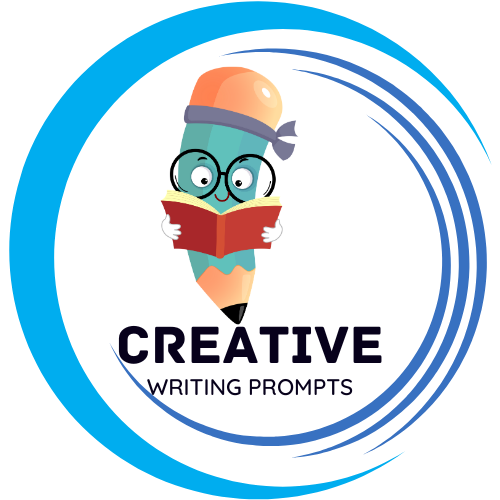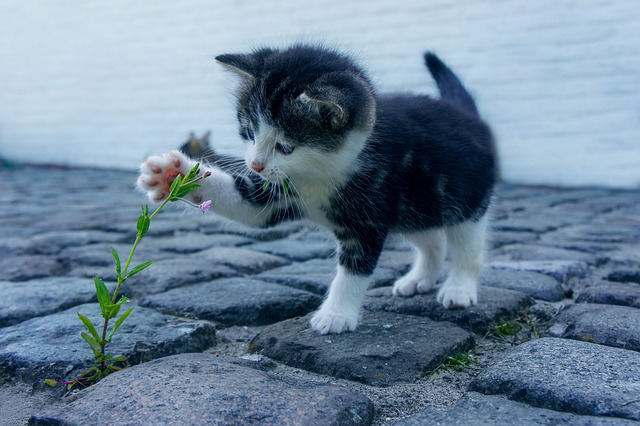Title: Unleashing Creativity: Conquering Writer’s Block Naturally
Intro:
For anyone who’s ever experienced the dreaded writer’s block, it can be an incredibly frustrating and discouraging experience. Whether you’re a professional writer or an aspiring wordsmith, the struggle to find inspiration and overcome the mental barricade can leave you feeling unproductive and devoid of creativity.
But fear not! In this article, we’ll explore a range of effective, all-natural techniques that can help you conquer writer’s block and unleash your creativity once again. Bid farewell to the anxiety that accompanies staring at a blank page or screen, and say hello to a renewed sense of inspiration and productivity.
From tried-and-tested methods to unconventional yet surprisingly effective approaches, we’ll share with you a comprehensive toolkit to combat writer’s block and rekindle the fire of creativity within. Whether you’re writing a novel, crafting a blog post, or tackling a journalist piece, these natural techniques will help you break free from the confines of a creative slump.
By adopting a natural human tone, we’ll provide practical insights and expert tips to empower you with the confidence and skills necessary to conquer writer’s block. Moreover, we’ll delve into the science behind creative blocks, debunking common myths and revealing lesser-known causes lurking beneath the surface.
Let’s embrace the challenge of writer’s block and transform it into an opportunity for growth and self-discovery. Get ready to unleash your imagination, tap into that wellspring of creativity, and reclaim your position as a wordsmith extraordinaire. Whether you’re an experienced writer or new to penning words, this article aims to serve as your personal guide on the thrilling journey towards conquering writer’s block naturally. So, without further ado, let’s dive into the world of unbridled imagination and rediscover the joy of writing!
Contents
- 1. Understanding the Creative Process: Breaking down the barriers inhibiting your creativity
- 2. Exploring Root Causes: Identifying and addressing the underlying factors contributing to writer’s block
- 3. Nurturing Inspiration: Cultivating an environment conducive to creative thinking
- 4. Stimulating the Senses: Engaging the power of sensory experiences to unlock creativity
- 5. Embarking on Mindful Practices: Incorporating meditation and mindfulness techniques to enhance the creative flow
- 6. Embracing the Power of Routine: Establishing daily rituals to foster consistent inspiration
- 7. Incorporating Playfulness: Rediscovering the joy of creativity through playful exercises and activities
- 8. Seeking Support and Feedback: Tapping into the resources and perspectives of others to overcome writer’s block naturally
- Frequently Asked Questions
- Wrapping Up
1. Understanding the Creative Process: Breaking down the barriers inhibiting your creativity
Unleashing your creativity is a journey that requires breaking down the barriers that hinder your artistic expression. By understanding the creative process, you can embark on a transformative adventure that will open up new realms of imagination. So, let’s explore some key insights to help you overcome those pesky hurdles and unleash your inner artist.
First and foremost, it’s crucial to embrace vulnerability. Often, fear of judgment and self-doubt act as significant barriers to creativity. By acknowledging and accepting your vulnerabilities, you can free yourself from the shackles of perfectionism and embrace the beauty in imperfection. Remember, some of the most remarkable works of art have been born out of vulnerability and raw authenticity.
- Discover your creative spark: Every individual possesses a unique creative spark, waiting to be ignited. Engage in activities that inspire and resonate with you, whether it’s taking a leisurely walk in nature, listening to music, or indulging in a captivating book. Cultivating an environment that nourishes your creative spirit will help unlock your true potential.
- Embrace failure as a stepping stone: Don’t let the fear of failure hold you back. Instead, view it as a stepping stone towards growth and innovation. Failure allows you to learn, adapt, and refine your artistic process. Embrace each setback as an opportunity to evolve and push your creative boundaries even further.
- Cultivate a supportive creative community: Surrounding yourself with like-minded individuals who share your passion for creativity can be immensely empowering. Join workshops, classes, or online forums to connect with fellow artists, exchange ideas, and receive constructive feedback. A supportive community not only provides valuable insight but also serves as a constant source of inspiration and motivation.
2. Exploring Root Causes: Identifying and addressing the underlying factors contributing to writer’s block
Writer’s block can feel frustrating and overwhelming, but understanding its root causes is the first step towards overcoming it. By delving deep into the underlying factors that contribute to writer’s block, you can develop effective strategies to address them head-on. Here are some key aspects to consider:
- Psychological factors: Emotions such as fear, self-doubt, perfectionism, or anxiety can be significant contributors to writer’s block. Acknowledging and managing these emotions is crucial for unlocking your creative flow.
- Lack of inspiration and ideas: Sometimes, writer’s block arises from a shortage of fresh ideas or inspiration. Exploring various sources of inspiration, such as books, artwork, nature, or personal experiences, can help reignite your creativity.
- External distractions: Environmental factors, such as noise, clutter, or interruptions, can greatly hinder your focus and productivity as a writer. Creating a peaceful and organized workspace can alleviate these distractions and improve your concentration.
Moreover, it is important to recognize that the causes of writer’s block can vary from person to person. Reflecting on your own experiences and being open to self-discovery are key elements in uncovering the underlying factors that hinder your writing process. Once identified, you can begin addressing these causes with targeted strategies, such as setting realistic goals, practicing self-care, establishing a routine, seeking support from writing groups or mentors, or experimenting with different writing techniques.
3. Nurturing Inspiration: Cultivating an environment conducive to creative thinking
In order to foster a creative and stimulating environment, it is important to create an atmosphere where inspiration can thrive. Here are a few strategies that can help cultivate an environment conducive to creative thinking:
- Encourage curiosity: Encouraging curiosity in the workplace can spark new ideas and perspectives. Encourage employees to ask questions, explore different angles, and challenge assumptions. This can be achieved by hosting brainstorming sessions, organizing workshops, or arranging guest speakers who can share their innovative experiences.
- Provide space for experimentation: Allowing employees the freedom to experiment and take risks leads to inventive thinking. Create dedicated spaces where employees can brainstorm and collaborate freely, away from the confines of their desks. These designated areas can be equipped with whiteboards, post-it notes, and other creative tools to facilitate out-of-the-box thinking.
- Foster a diverse and inclusive culture: Diversity and inclusion are essential to cultivate an environment that nurtures creativity. Embrace diverse perspectives and encourage the sharing of ideas from individuals with different backgrounds and experiences. This can be achieved by implementing mentorship programs, establishing employee resource groups, or organizing team-building activities that promote understanding and appreciation of diversity.
By implementing these strategies, organizations can empower their employees to think creatively, leading to innovative solutions and fresh ideas. Remember, fostering inspiration is an ongoing process that requires continuous support and encouragement.
4. Stimulating the Senses: Engaging the power of sensory experiences to unlock creativity
In our fast-paced world, where distractions seem to be constantly vying for our attention, it’s essential to tap into the incredible potential of our senses to fuel our creativity. By immersing ourselves in sensory experiences, we can unlock new realms of inspiration and innovation.
Here are some effective ways to stimulate your senses and ignite your creative fire:
- Smell: Surround yourself with invigorating scents, like fresh coffee, citrus fruits, or aromatic herbs. Studies suggest that certain smells can enhance cognitive function and improve focus, helping you generate unique ideas.
- Taste: Experiment with different flavors and textures. Treat yourself to a variety of foods that awaken your taste buds. The complex sensations can trigger unexpected connections in your brain, leading to novel approaches in your creative endeavors.
- Touch: Engage in activities that allow you to explore different textures or sensations. Whether it’s playing with clay, running your fingers through sand, or feeling the softness of fabric, tactile experiences can stimulate your imagination and provide a fresh perspective.
- Hearing: Surround yourself with diverse sounds, from melodic music to the soothing rhythm of nature. Pay attention to the subtle nuances or find inspiration in the harmonies, and let the power of sound help unleash your creative potential.
- Sight: Immerse yourself in visually stimulating environments. Visit art galleries, take nature walks, or simply observe the world around you. Exploring colors, shapes, and patterns can inspire innovative ideas and spark your imagination.
By embracing these sensory experiences and indulging in the richness they offer, you can tap into the wellspring of creativity within you. Let the senses be your allies on the creative journey, guiding you towards unique perspectives and breakthrough ideas!
5. Embarking on Mindful Practices: Incorporating meditation and mindfulness techniques to enhance the creative flow
In today’s fast-paced society, finding ways to enhance our creative flow is essential. One powerful tool that can help us to unlock our creativity and bring about a sense of calm and focus is through the practice of meditation and mindfulness techniques. By incorporating these practices into our daily routine, we can cultivate a heightened state of awareness and tap into our deepest potential.
So how exactly do meditation and mindfulness techniques aid in enhancing our creative flow? Firstly, they allow us to quiet the noise of our busy minds and bring our attention to the present moment. This heightened state of awareness enables us to fully immerse ourselves in our creative endeavors, allowing ideas and inspiration to flow freely. Additionally, practicing mindfulness helps us to cultivate a non-judgmental attitude towards our creative process. This means that we can approach our work with a sense of curiosity and openness, without being overly critical or self-judging.
Bold Benefits of Embarking on Mindful Practices:
- Improved focus and concentration
- Enhanced creativity and problem-solving abilities
- Reduced stress and anxiety levels
- Increased self-awareness and self-acceptance
- A deeper connection with oneself and the surrounding world
Embarking on a journey of incorporating meditation and mindfulness techniques into our lives can truly revolutionize our creative flow. By harnessing the power of these practices, we can unleash our unique potential and experience a newfound sense of clarity, purpose, and fulfillment in our creative pursuits.
6. Embracing the Power of Routine: Establishing daily rituals to foster consistent inspiration
Consistency breeds inspiration, and establishing daily rituals can be a powerful tool to unlock your creative potential. By incorporating simple routines into your everyday life, you can create a solid foundation for personal growth, productivity, and motivation. Here are a few tips to help you embrace the power of routine and cultivate a consistent source of inspiration:
- Start your day with intention: Begin each morning by setting goals and intentions for the day ahead. Whether it’s through journaling, meditation, or a morning walk, taking time to reflect and visualize your aspirations can set the tone for a productive and inspired day.
- Create a nourishing environment: Surround yourself with items and elements that evoke positive emotions and ignite your creativity. For example, consider decorating your workspace with plants, artwork, or meaningful objects that resonate with your passions. A well-curated environment can have a profound impact on your mindset and ability to generate ideas.
A consistent routine offers structure and familiarity, which is essential for unleashing your creative potential. Experiment with different rituals and find what works best for you, tailoring your routine to suit your needs and preferences. Remember, even the smallest actions can contribute to significant personal and professional growth over time. So, embrace the power of routine and watch as your daily rituals transform into a wellspring of inspiration.
7. Incorporating Playfulness: Rediscovering the joy of creativity through playful exercises and activities
Creativity is like a playful spirit that resides within each of us, waiting to be awakened. Embracing a sense of playfulness can unlock a world of endless possibilities and reignite the joy of creativity. This section offers a variety of engaging exercises and activities designed to help you tap into your inner child and rejuvenate your creative process.
1. Improvisation: Step into the realm of spontaneity by engaging in improvisational exercises. Improve your ability to think quickly on your feet and unleash your creativity by participating in improvisation games and exercises with friends or colleagues.
2. Doodling and Sketching: Grab a pen and let your imagination run wild! Doodling and sketching can be incredibly freeing and can help break through mental blocks. Take a few moments each day to draw whatever comes to mind, unconstrained by expectations or outcomes.
3. Brainstorming with a Twist: Shake up your traditional brainstorming sessions by introducing playful elements. Use props, role-playing, or even silly hats to encourage a light-hearted atmosphere. This approach can inspire fresh and unconventional ideas that may have otherwise remained hidden.
8. Seeking Support and Feedback: Tapping into the resources and perspectives of others to overcome writer’s block naturally
Resources for Seeking Support
When faced with writer’s block, reaching out for support can be incredibly beneficial. Connecting with others who have experienced similar challenges can provide valuable insights and motivation. Here are a few resources you can tap into:
- Writing communities: Join online forums or groups dedicated to writers. Engaging with fellow wordsmiths can help inspire you, offer constructive feedback, and provide a space to share your struggles and successes.
- Writing workshops: Attend workshops or webinars led by experienced authors or writing coaches. These sessions often cover strategies to overcome writer’s block and provide practical exercises to boost creativity.
- Mentorship programs: Look for mentorship programs or seek guidance from writers you admire. A mentor can provide personalized advice, accountability, and support throughout your writing journey.
Gaining Feedback from Others
Feedback is a powerful tool that can help you identify areas of improvement and break through writer’s block. Consider the following approaches to gather valuable feedback:
- Writing critique groups: Join local or online writing groups where members provide constructive criticism and feedback on each other’s work. These groups foster a supportive environment while offering valuable insights and fresh perspectives.
- Beta readers: Share your work-in-progress with trusted friends, family, or fellow writers for their opinions. Beta readers can provide honest feedback, identify plot holes, highlight engaging elements, and offer suggestions for improvement.
- Writing contests and platforms: Participate in writing contests or submit your work to platforms that provide feedback. Even if you don’t win, the feedback provided by professionals in the industry can be invaluable and help you refine your writing skills.
Frequently Asked Questions
Q: What is writer’s block and why does it happen?
A: Writer’s block refers to a temporary inability to produce new ideas or words while writing. It can happen due to various reasons, such as stress, self-doubt, lack of inspiration, or an overwhelming workload.
Q: How does writer’s block affect writers?
A: Writer’s block can be truly frustrating and discouraging for writers. It can lead to feelings of anxiety, self-criticism, and even a loss of confidence in one’s abilities. In severe cases, it may hinder progress on writing projects and contribute to missed deadlines.
Q: Are there natural methods to overcome writer’s block?
A: Yes, there are several natural techniques that can help overcome writer’s block effectively. These methods focus on stimulating creativity and encouraging a positive mindset.
Q: What are some practical ways to unleash creativity and overcome writer’s block?
A: Some practical techniques include:
1. Take breaks: Stepping away from your writing for a short period can provide a mental refresh. Engage in activities you enjoy or practice mindfulness exercises to help clear your mind and rejuvenate your creative energy.
2. Freewriting: This technique involves writing continuously for a set timeframe, without worrying about grammar, coherence, or topic relevance. It helps to bypass internal filters and stimulates the flow of ideas.
3. Seek inspiration from other sources: Engage in activities that inspire you, such as reading books, visiting art galleries, or exploring nature. Drawing ideas from different sources can spark creativity and provide fresh perspectives.
4. Set realistic goals: Break down your writing project into smaller, manageable tasks. By setting achievable goals, you can build momentum and avoid overwhelming yourself, which may contribute to writer’s block.
5. Establish a writing routine: Consistency is key. Set a regular schedule for writing and create a designated space that is conducive to your creative process. A routine can help condition your mind for productivity and minimize the chances of writer’s block.
6. Practice brainstorming: Gather your thoughts, ideas, and themes related to your writing project on paper or a digital platform. Visualize connections, create mind maps, or use other brainstorming techniques to stimulate creativity and generate new ideas.
Q: Are there any lifestyle changes that can help combat writer’s block naturally?
A: Absolutely! A healthy lifestyle can do wonders for combating writer’s block. Prioritize sufficient sleep, exercise regularly, eat nutritious meals, and make sure to take care of your mental well-being. These factors can improve focus, reduce stress, and promote overall creativity.
Q: Can collaborative writing or seeking feedback be beneficial in fighting writer’s block?
A: Collaboration or seeking feedback can be incredibly beneficial in overcoming writer’s block. Sharing your work with others allows you to gain perspective, gather new ideas, and receive constructive criticism. Collaborative writing projects or writing groups can create a supportive environment where you can bounce ideas off fellow writers and reignite your creativity.
Q: Are there any natural remedies or supplements that can help with writer’s block?
A: While there is no magical pill for writer’s block, certain natural remedies or supplements, such as herbal teas, essential oils, or stress-relief techniques like meditation, may help create a relaxed and focused mindset. However, it is important to remember that these remedies may work differently for each individual, so finding what works best for you may involve some trial and error.
Q: Is it common for writers to experience writer’s block, and is it possible to overcome it completely?
A: Writer’s block is a common phenomenon experienced by writers of all levels of expertise. While it’s virtually impossible to completely eliminate the possibility of writer’s block, the techniques and strategies mentioned can significantly reduce its frequency and impact. By embracing these methods, writers can learn to navigate and conquer writer’s block naturally, bringing forth their creativity with greater ease.
Wrapping Up
In conclusion, writer’s block can be overcome naturally by adopting various strategies such as engaging in creative activities, practicing mindfulness, and seeking inspiration from nature. By unleashing our creativity, we can conquer writer’s block and achieve our writing goals.








